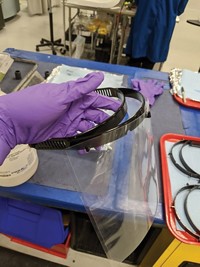Advertisement
Grab your lab coat. Let's get started
Welcome!
Welcome!
Create an account below to get 6 C&EN articles per month, receive newsletters and more - all free.
It seems this is your first time logging in online. Please enter the following information to continue.
As an ACS member you automatically get access to this site. All we need is few more details to create your reading experience.
Not you? Sign in with a different account.
Not you? Sign in with a different account.
ERROR 1
ERROR 1
ERROR 2
ERROR 2
ERROR 2
ERROR 2
ERROR 2
Password and Confirm password must match.
If you have an ACS member number, please enter it here so we can link this account to your membership. (optional)
ERROR 2
ACS values your privacy. By submitting your information, you are gaining access to C&EN and subscribing to our weekly newsletter. We use the information you provide to make your reading experience better, and we will never sell your data to third party members.
Materials
3-D printing start-up Carbon unveils its first printer
Company announces its M1 printer along with custom photosensitive resins
by Matt Davenport
April 1, 2016

The three-dimensional printing start-up Carbon, formerly Carbon3D, announced the launch of its first printer on Friday along with seven photosensitive resins that work with it.
By exploiting polymer photochemistry, Carbon says, its machines print parts up to 100 times as fast as conventional 3-D printers, which typically stack materials into 3-D objects. The new UV-curable resins will allow users to print rigid and flexible polyurethane as well as a stiff, strong cyanate ester that can withstand temperatures exceeding 200°C, the company says.
Carbon’s combination of speed and materials will enable manufacturers to start 3-D printing fully customized products with materials properties that match or surpass those made by conventional methods such as injection molding, says Joseph M. DeSimone, the company’s CEO and cofounder. These products could include car parts, medical devices, even sneakers, he adds.
Since unveiling its technology last year, Carbon has built a customer base including Ford, BMW, and Johnson & Johnson. Now, the company is openly selling its first medium-sized printer—called M1—to manufacturers according to an annual subscription model, giving users access to maintenance and system updates.
Since its 2013 launch, Carbon has raised $141 million, with over $100 million coming in 2015. This represents a substantial portion of all the funding that went into 3-D printing last year, according to Anthony Vicari of the market research firm Lux Research. But Vicari isn’t certain how disruptive Carbon’s announcement will be.
Photopolymers are typically expensive compared with thermoplastics, Vicari notes. The cost might make sense in health care applications, he says, but it’s unclear how wide the technology’s appeal will be. “I’ve been consistently surprised by the amount of attention and hype it’s received,” he says. “Nevertheless, any increase in the range of available printable polymers is a good thing.”
DeSimone points out that Vicari has not been fully updated about Carbon’s chemistry. And Carbon’s vice president of materials, Jason Rolland, says the company has just started to explore the range of materials and material properties it can offer customers.





Join the conversation
Contact the reporter
Submit a Letter to the Editor for publication
Engage with us on Twitter